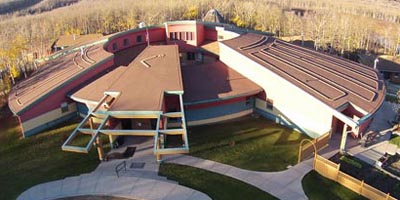Although she says that her childhood was positive in many ways, Sheri Pranteau grew up disconnected from her ethnicity, surrounded by alcoholism, violence and dysfunction, and amongst adults trying to cope with their trauma. Her grandmother was in a residential school between the ages of seven and nineteen. Her mother was one of the many missing and murdered Indigenous women.
In her teenage years, she became involved in street crime, gangs and alcoholism, ending up incarcerated at the age of sixteen and where she would remain for seventeen years.
“Going into prison with that type of reputation, that type of background, they just automatically put me in maximum security and kept me away from everybody else,” she says. “It’s isolation, smart isolation. If you don’t wake up on time, you don’t get your job. It’s constant, it brainwashes you. If you don’t do this, it’s punishment, punishment, punishment. There is no healing.”
Since the 1990s, there has been consistent discourse about the overrepresentation of Indigenous people in the Canadian prison system. Yet the numbers have remained stagnant, if not increasing in certain provinces. Federally, Indigenous people account for 32% of the total prison population, and nearly half of the female prison population.
I spoke with four people working for organizations that aim to tackle this overrepresentation:
- Leslie-Anne St. Amour, a lawyer with Durant Barristers, and a member of the board at Aboriginal Legal Services in Toronto.
- Rick Sanderson, Justice Director of the Prince Albert Grand Council, which has an Alternative Measures Program aimed at finding alternative vehicles to traditional policing and punishment.
- Emilie Coyle, Executive Director of the Canadian Association of Elizabeth Fry Societies, an organization with the aim of “working toward a world without prisons”. She has practiced family, criminal and immigration law.
- Sheri Pranteau, Advocacy Liaison of the Canadian Association of Elizabeth Fry Societies. She has personal experience in the Canadian prison system and in healing lodges.
For Leslie-Anne St. Amour, an important starting point to better understanding the issue is the broader context of an enduring colonial system.
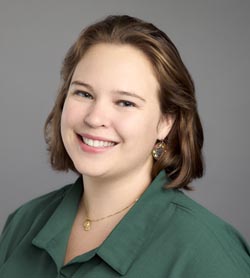
“The 60s scoop and residential schools disrupted Indigenous communities, disrupted our own laws and governance,” she says. “A lot of these issues led to situations that are criminalized by the Canadian state. The cycle of abuse is a thing that exists. Folks who are abused as children in residential schools now don’t necessarily have the skills to parent their own children. They may be relying on substances to help them cope, engaging in abuse themselves, or engaging in crimes of poverty, to help themselves stay alive and stay afloat. And so some of these systems lead to criminalization of Indigenous people.”
Healing Lodges
Instead of isolation and punishment, St-Amour wants to explore alternatives that take into account mental health issues, healing and the future. One of these potential avenues are healing lodges, which combine prison with rehabilitation and Indigenous-specific culture and healing.
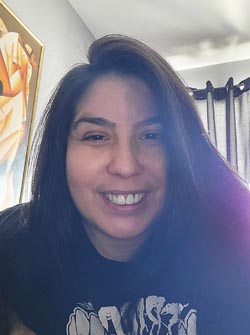
For Sheri Pranteau, the first experience being exposed to her culture in a profound way was in prison, from an Elder in prison with her. Afterward, she was transferred to Okimaw Ohci Healing Lodge near Maple Creek, Saskatchewan. This combination was beneficial to her. “It piqued my interest to stay on the road, to follow the teachings, to follow the medicines,” Pranteau said. “Elders say, when everything else falls, return to the medicines.”
However, healing lodges remain few. Pranteau also views them as stopgap measures. “It would have been more beneficial if I had the opportunity to learn my culture outside of prison. Yes, it was on native land, rented from the indigenous community there, but everything was still on a schedule. We had to be in a healing circle by this time, and if you didn’t, there were still consequences, like you couldn’t go to program later or you couldn’t do this after this free time. It is a prison,” she said. “They brought in the traditional ways, and that’s really great for people like me who had no idea what that was. But you bring that aspect, and then you bring the punishment along with it again, it kind of gives you mixed feelings.”
Pranteau also said that she felt poorly equipped to deal with life after prison. “Afterwards, they just let me out into where I grew up, in North End Winnipeg which, by this time, was even scarier than before I left. I would have been better served if I had the opportunity to practice my culture and follow elders and have a safe place to go.”
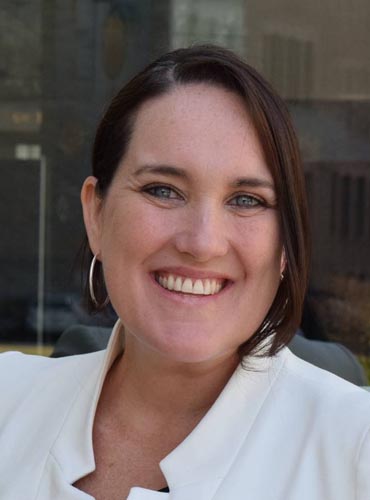
There are different forms of mediation beyond prison. Emilie Coyle spoke about the usefulness of the combination of culture and punishment. “If we could take the $2.8 billion that we spend on the federal prison system every year and build places where people can go and learn about their culture and learn to heal and be healed and learn all of the different teachings that Sheri mentioned. Wouldn’t that be more beneficial than doing it in a prison setting?”
As Coyle was inferring, prison is more expensive than other options, and Rick Sanderson agrees. “For federal prisoners, it costs about $115,000 a year to house them. Instead, if you have someone on call to deal with these issues, to work within the community to attend their counselling sessions, whether it be alcohol or drug or family violence, or respectful relationships, then you’re saving money because it’s only $18,000 per person. You would be saving $97,000 right there. So we have to start investing in our communities to take care of things locally, not just transport the problem out.”
Community Policing
More local initiatives include community policing, which is increasingly spoken about in the on-going conversation about prison and police reform. Sanderson, who worked as an RCMP officer from 1984 to 2006, talked about the challenges of non-Indigenous people policing Indigenous communities. “How can you police an area that you don’t really understand? Unfortunately, as a former RCMP officer, I saw a lot of officers that weren’t suited for First Nations policing, because they held themselves at a higher level, I guess you could say and First Nations as just a problem to deal with. And we’re not.”
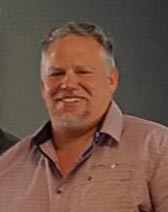
In some situations, with two different First Nations communities, for example, Sanderson proposes a joint police force, with both the RCMP and First Nations staff, and emphasizes the need for cultural specificity for those policing a community.
Part of the Prince Albert Grand Council’s Alternative Measures is sentencing outside of the formal court system. This sometimes takes the form of sentencing circles in which, Sanderson says, “the accused, the victim and then local people, whether it be a support unit, the RCMP or the legal aid, are all involved. It’s about looking at what they’ve done, seeing how it hurts people and what can be done about it. It has a far better impact on people than just a normal sentence or probation; they have a more lasting effect on the accused. And we don’t really only deal with criminal issues. In one case, we had a group of girls in a school that were arguing and trying to fight with each other.”
These kinds of processes are, however, still rare. It is difficult to find funding and labour for these kinds of initiatives. “A caseworker or court worker in our area in Saskatchewan makes between $16 and $20 an hour. Our longest employee that we have here at Prince Albert Grand Council has been working as a justice worker, a court worker, for a little over twenty years. His wage is $24 an hour right now. And a probation officer or a community youth worker, under the governmental system here, starts wages at $30.93, and it goes up to over 38 per hour,” Sanderson said.
Pre-Incarceration Legal Work
St. Amour also spoke about her work with Aboriginal Legal Services and the grassroots efforts within the justice system at the pre-incarceration level. Aboriginal Legal Services’ importance lies in the ability to provide what she refers to as “culturally appropriate services”.
This includes, she says, “a court worker program where somebody in a court, in different designated courts around Toronto, who will not necessarily be your lawyer, but they will be there to answer questions for Indigenous folks who show up, unsure of what they need to be doing and be aware of, often related to what their charge means and entails”. This program can help those who do not understand their situation and the resources available. It is especially necessary during the pandemic, when Zoom and phone calls brought about new technological challenges.
St. Amour also spoke to me about some of the inquiry work that Aboriginal Legal Services does. “In certain circumstances, if someone passes away in the custody of the police or while incarcerated in certain circumstances, it can result in an inquiry being done into what happened. A more well-known inquiry that folks may be familiar with, that we were involved with, was the inquiry into the deaths of the seven indigenous high school students in Thunder Bay. In situations like that, where deaths or injuries occur, we want institutions to understand what happened and be able to answer those questions and look into it, and make recommendations. I think that it is a really important opportunity to be asking different questions like: What are indigenous people experiencing in the justice system? How are they being treated? How are they being interacted with? What role is discrimination continuing to play?”
A well-known success of Aboriginal Legal Services was its assistance in litigating the Gladue case to the Supreme Court. The result of this 1999 case was the Gladue Principle acknowledging the special circumstances of Indigenous people and the impacts of a history of discrimination and colonialism, and the pre-sentencing Gladue reports that take into account Indigenous background.
St. Amour outlined some of the potential circumstances in which this needs to be done. “Sometimes courts have people serve their time incarcerated on weekends to allow them to continue to hold a job during the week. But if you’re doing that for someone who is in a remote community, and they don’t have access to a prison anywhere near them, if they’re still just serving on weekends, they’re still away from their community just for a longer period of time, because they’re just in and out of prison, hundreds of kilometres away,” she said. “And so some of these ways of looking at what kind of penalties should be imposed simply just don’t suit Indigenous circumstances, let alone taking into account the history, what may have caused that person to arrive in that situation, and whether or not they may be better served by something like addictions treatment rather than being incarcerated.”
As for the Gladue reports themselves, she says, “They’re not perfect. Indigenous overrepresentation is still a problem, even though it’s existed now for several decades. But to me, at least every time they help someone receive a more appropriate sentence versus something that would have been unnecessarily burdensome or unnecessarily punitive, it’s a win. Even if it’s just one person, because it’s one person’s whole life.”
Even so, the Gladue reports are only principles, and not legal requirements to be enforced. There are also limitations to such a principle, as it operates within the Canadian prison framework, with requirements such as mandatory minimum sentencing for some offences. (Some mandatory minimums are expected to be removed in 2022.)
Indigenous Independence
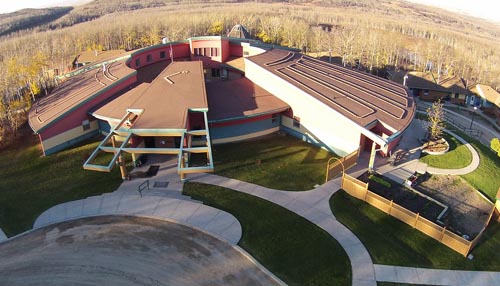
Though there are some hopeful examples within the current system, St. Amour’s belief in the importance of cultural considerations leads her toward a push for more independent, community justice systems. She says that these would “inherently understand their context. I think when communities are able to implement their own laws and legal systems, and have them respected by the provincial and federal governments, it is a really interesting and powerful opportunity for things to change. I can’t speak for every nation; not all nations may want to do that, and that’s fair. But that’s something that I would like to see explored.”
The limitations to such a change lies primarily in the Canadian Constitution, St. Amour says. “Criminal Code and criminal law is federal jurisdiction. Most family laws and property laws are provincial jurisdiction. All of those courts interact in different ways with each other. It would be really challenging to set up a court for a First Nation, and it gets more complicated if not all the parties involved belong to that First Nation.”
The autonomy that St. Amour brought up is part of a large and dynamic conversation, in which the government has taken part. For example, the government introduced Community Tripartite Agreements, or CTAs. These are policing agreements between the federal government, the provincial government and the First Nations. However, the First Nations groups are often not consulted, Sanderson said. “In my experience, the First Nations have no input into these agreements. They are basically handed a document at the eleventh hour, told to sign it and carry on.”
Under a CTA agreement, the federal government is responsible for enforcing band bylaws. However, Public Safety Canada, which handles First Nations policing with the provincial government, refuses to enforce them arguing that it is Justice Canada’s jurisdiction. In turn, Justice Canada says that it is the First Nations’ responsibility, as it is their bylaws. Sanderson says, “Myself, and the Grand Council, we feel that it is the responsibility of the police, First Nations or Public Safety Canada to deal with it, because it’s federal land. And it’s under federal law.”
A Holistic Approach
Beyond policing, Sanderson says that there needs to be a more holistic approach to healing that would include teaching people how to deal with their experiences with residential schools and addiction, as well as crime. He wants to see a push for more aboriginal education taught in police forces, but also for the general population.
Each person interviewed spoke of the larger, systemic issues underlying the phenomenon. The ways to curb it are to invest in projects that specifically target these issues.
One of them is welfare. “Status Indians are not covered provincially for health care, they access health care to the federal government. And this can make things complicated, because if they require access to certain types of healthcare, which may mean being brought south for certain types of treatment doesn’t always mean they’ll be taken back north. People can be left stranded in cities where they’ve been accessing health care, which can lead to further problems,” St. Amour says.
“It’s really important to recognize the role that land and access to land has on this situation,” she says. “So much of the circumstance leading to the criminalization of Indigenous people can be tied back to the loss of the land or displacement from our land, whether it is from a loss of food, resources, that are forcing people to leave. Or whether it has to do with the defence of our land being criminalized and people ending up in the justice system that way. Something as simple as ensuring that people are returned home after they are released from incarceration can have a big impact on assisting them in not ending up incarcerated again. I think that relationship [between criminalization and loss of land] has resulted in where we are, and should be informing what we do going forward.”
Coyle speaks of the work that has been done, and the importance of going back and taking it seriously. “We should be looking at The Truth and Reconciliation Commission and the calls to action, the Missing and Murdered Indigenous Women and Girl Report and Recommendations. I think if we go back and we take a look at those, and any updates that have been made, they provide a ton of guidance for us. And those are ones that we should continue to pay attention to.”
Another main obstacle is bureaucracy. Though politicians have been speaking of the overrepresentation issue for three decades, and put forward some potential programs, Sanderson says that there is little follow-through. He talked about the repeated contact efforts in 2018 and 2019 to contact Ralph Goodale, the Minister of Public Safety, regarding self-policing. After several redirects, this line of contact was lost, with no response from the federal government as of March 2019.
“I wish everybody would be truthful and follow through on their words,” Sanderson said. “Politicians who say they want to collaborate with First Nations have to listen to us and follow through on our demands.”

